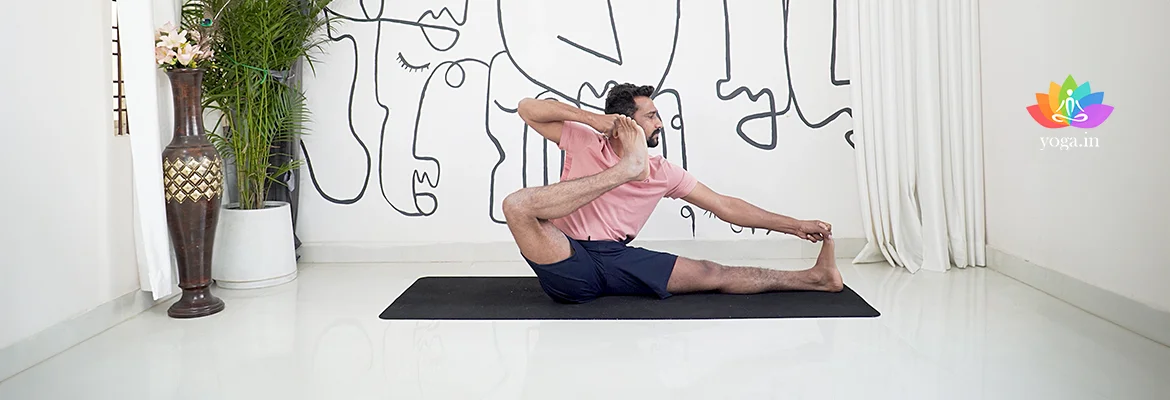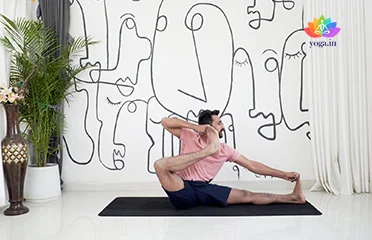Sit on the floor in Dandasana.
Introduction to the Asana
The Sanskrit name is derived from Akarna (अकर्णा ) meaning towards the ear, Dhanura (धनुर) meaning bow, and asana (आसन) meaning posture or seat.
Step to get in the pose
-
-
Bend forward and stretch your arms to hold your toes.
-
Keep your torso straight.
-
Inhale & bring your left foot up to your left ear.
-
Keep your hold on the other leg.
-
Maintain the posture.
-
Slowly release the left foot and bring it back to the floor.
-
Repeat the movement on the other side.
Common mistakes and pitfalls
-
Rounding the back instead of maintaining a long spine.
-
Forcing yourself into the full pose without proper warm-up or preparation.
-
Holding tension in the shoulders or jaw.
-
Not relaxing and breathing deeply throughout the pose.
Benefits
-
Alleviates back pain and mild sciatica.
-
Tones your legs and arms.
-
Increases the flexibility of the spine, hips, groins, chest, neck, and shoulders.
-
Helps to improve the efficiency of the liver and kidneys.
-
Tones the abdominal muscles and aids in reducing belly fat.
-
Promotes blood circulation and cardiac health.
-
Widens the opening of your chest and expands lung capacity.
-
Effectively stimulate and nourish your reproductive organs – ovaries, testes, uterus, and prostate glands.
-
Stimulates the urinary and excretory organs.
-
Boost immunity and revitalize the body.
-
Builds strength and flexibility.
-
Enhances the nervous system and improves concentration and focus power of the brain.
Contraindication
-
Avoid in case of shoulder, ankles, wrist, toes, hamstrings, shoulders, hips, knee or spine injury.
-
Avoid if you have a weak body frame.
-
Avoid during menstruation and pregnancy.
-
Avoid in case of lower back issues or a herniated disk.
-
Avoid if you lack body-breath alignment.
-
Not advisable for senior citizens.




